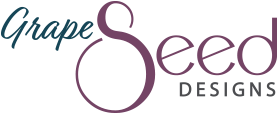Think about the logos you see every day — from Pepsi to Shell gas to Google and CNN. You recognize these marks with no more than a quick glance.
But have you thought about the ways they’re different? There are a variety of “formulas” for creating a new logo.
It’s often believed the most successful logos are those recognizable by only an icon or small mark. And while these icons are an important shorthand, sometimes we forget how many brands use a full name or word mark.
As part of our DIY Your Brand series, we’re about to take the next big step — blending color and typography to create a simple logo.
But first, I want to walk through 7 different types of logos. I’ll break them into 3 categories: icon marks, text-based marks, and combination marks.
Icon Marks
Simplified icons are a great way to establish quick recognition. But they can be more complex to pull off well and often require a designer or illustrator to execute.
Icon marks are usually integrated with a letter mark in their full form, but can also stand alone.
Abstract Mark
These are icons that are neither text nor a clearly-identifiable image. These are brands like Airbnb, Pepsi, Windows, or Nike.
Pictorial Mark
Unlike an abstract mark, these icons represent clearly identifiable objects. Some examples include Apple, Twitter, or Shell.
Mascot
This is more than just having a mascot (like Mr. Clean) — it’s actually incorporating them into your everyday logo. Think of brands like Wendy’s, KFC, or Linux.
Text-Based Marks
Logos created entirely (or primarily) from typography (letters) are known as either wordmarks, logotypes, or lettermarks.
Wordmark or Logotype
When a brand uses their full name in the logo, it’s known as a wordmark or logotype. Some examples are Google, Subway, and CamelBak.
Note: Google and Subway also use an icon reduction of their logos, but both parent logos are full business names.
Lettermark
Lettermarks are also text-based, but only use a few letters rather than the full business name. These are brands like NASA, CNN, and FedEx.
Some brands, like McDonalds and WordPress, also employ an icon reduction of their logo using a single letter or monogram (also considered a lettermark). Others, like NASA, CNN, and FedEx, exclusively use their abbreviated lettermarks.
Combination Marks
Combination marks incorporate both imagery (or icons) and text. These two elements may be inseparable, such as with an emblem. Or they can be used both separately and together. Together they’re known as a lockup.
Emblem Logo
These are very common for universities, and are often combined with mascot styles for sports teams. The style is also used by Starbucks, Stella Artois, or Porsche.
Lockup
The final category blends icon marks with text-based marks. Icon and text marks can often stand alone, but together create what is called a “lockup.” Think about brands like Taco Bell or Sprout Social.
Sometimes, though, a combination mark cannot separate icon from text. For example Burger King’s text-in-a-hamburger is never separated into text only.
What’s next?
Next week we’re going to look at 3 easy steps to create your own logo by blending your brand colors and typography. If you haven’t gone through those two steps, hop back over and do that now, then join us to DIY your own logo!
Want tips in your inbox?
Sign up for the newsletter and be the first to receive insights like these, along with exclusive promotions only available to list members!

